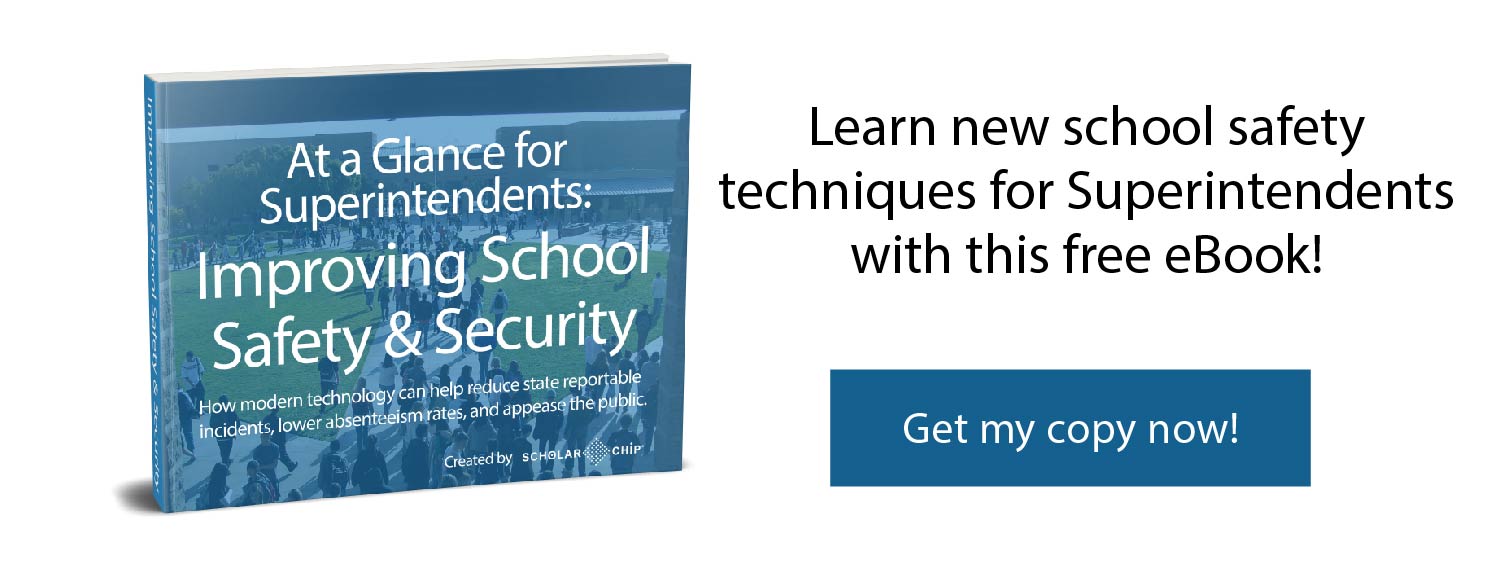School absenteeism rates are a critical concern for most school districts. Chronic absenteeism rates have a disruptive influence on classrooms and students.
Addressing school absenteeism requires a complex approach from multiple perspectives to deliver actionable and measurable results. One key component to solutions is using technology that keeps students safe and secure. Such tools can have a powerful impact on the school environment, providing an experience for all students and educators that has a positive effect on learning outcomes, community support, and campus climate.
School Safety and Absenteeism
The issue of school security and absenteeism is complex. Do students choose to avoid school because they feel less safe? How is the campus climate? A recent study by researchers at the University of California at Davis indicated that school safety and the perception of safety have a considerable impact on absentee rates.
The study looked at truancy factors among students in California middle and high schools. A fear of bullying and other school and community safety issues were key factors for why students skip school.
According to the study, students who felt very safe at school had a 44 percent lower likelihood of being truant than those who reported unsafe conditions. The researchers noted that district initiatives that emphasize safety had the potential to improve school attendance.
A similar study from the University of Southern California found a correlation between school safety and learning outcomes. Students who feel unsafe have lower scores on standardized math and English tests, and are more likely to end up qualifying for expensive special-education services.
Impacts of Chronic Absenteeism
The scope of absenteeism in American schools is staggering. According to a U.S. Department of Education study, during the 2013-14 academic year, more than 6 million students – one out of every seven students – missed at least three weeks of school. Almost 20 percent of high school students are defined as “chronically absent.”
The consequences of chronic absenteeism are significant on students, school systems and their communities. Absenteeism has short-term impacts – students not in school are more likely to get into trouble and fall behind in their academic progress. It also has profound long-term impacts, including the following from the Education Department report:
- Chronic absenteeism in the earliest grades correlates to an inability to read at grade level by third grade. Students who cannot read at grade level at that age are four times more likely to dropout of high school.
- A study of Utah public school students showed that chronic absenteeism in just one year between eighth and 12th grade meant a seven-fold increase in the likelihood of dropping out.
- High school dropouts have poorer life outcomes, from poverty to crime to health.
School Districts Under Scrutiny
Schools across the nation face increasing scrutiny and pressure to provide safe experiences, to improve learning outcomes, and to address other community issues. Districts need technology solutions that will address multiple concerns when it comes to providing school security.
The public sees news of school violence all too often. That means increased worry about their local districts.
Parents and neighbors want to know children are safe. At the same time, taxpayers and boards of education want to be sure that resources are being spent wisely and that technology expenses are not taking away from other learning resources.
What’s more, some state and federal school funding models reimburse districts for each day a student attends school. Schools with more absenteeism have less to spend.
Looking at Solutions
Technology plays a growing role in keeping schools safe. The Rand Corporation noted in a 2016 book that one of the most pressing needs is applications “that would integrate currently fragmented and outdated school safety policies, procedures, and training for school staff and parents.” There are generally a small handful of approaches that can come close to solving the case of reducing chronic absenteeism. This is the overall goal for anyone and everyone, but to reach that goal, modern technology seems to be the clear path that should be taken.
These technologies are at the heart of the Identity Management Systems and Smart ID Card technology. A visitor management system can be a powerful tool that ensures a systematic approach to tracking attendance, eClass learning, and behavioral management. Classroom attendance can also be taken period-by-period.
There also needs to be a viable solution to track parents, vendors, volunteers, and community members seeking to visit classrooms, deliver supplies or use school facilities. The system integrates with your school’s information management system and can be used to manage custodial issues, student pick-ups, visitor processing, and staff time and attendance.
Visitor Management is a component of ScholarChip’s integrated, cloud-based school safety and operation services. It scans driver’s licenses and connects to real-time sex offender databases. Photographs are taken, name badges printed, and checkouts automated via self-service kiosks or staff inputs.
The system allows for analysis of who is visiting your school buildings, why they are there, and provides comprehensive reporting on activity. Pre-defined exclusion lists ensure that unwanted visitors are tracked and monitored.
ScholarChip is an all-in-one, cost solution to help reduce school threats and address the important issues surrounding school safety. Data from students, faculty and stakeholders are leveraged to manage school access, attendance such as chronic absenteeism, and behavior management through the platform tools to increase safety and promote the campus climate schools are looking for.
To learn more about how ScholarChip’s Visitor Management System can address your school security needs, feel free to request a 1-on-1 strategy session today!


